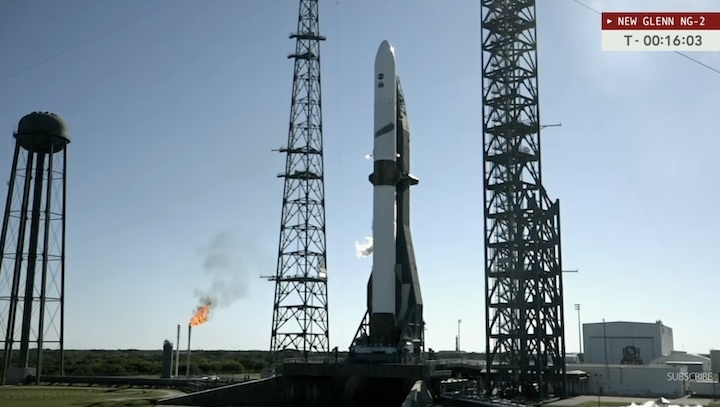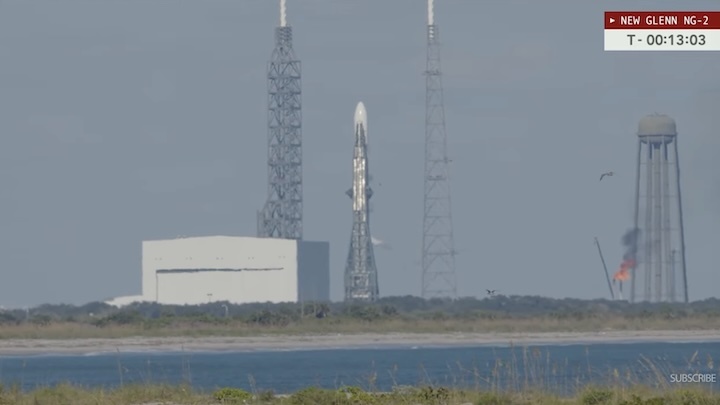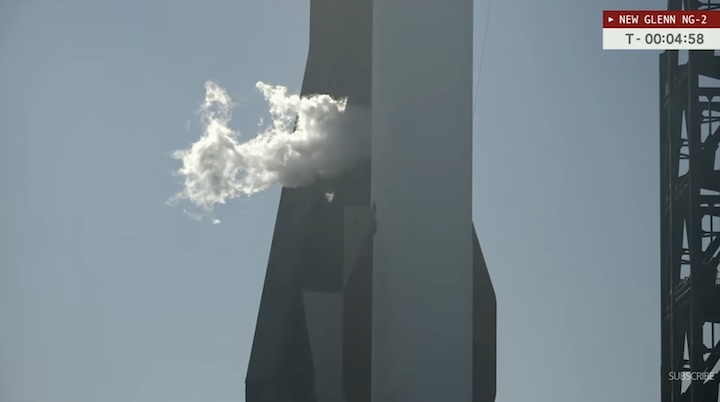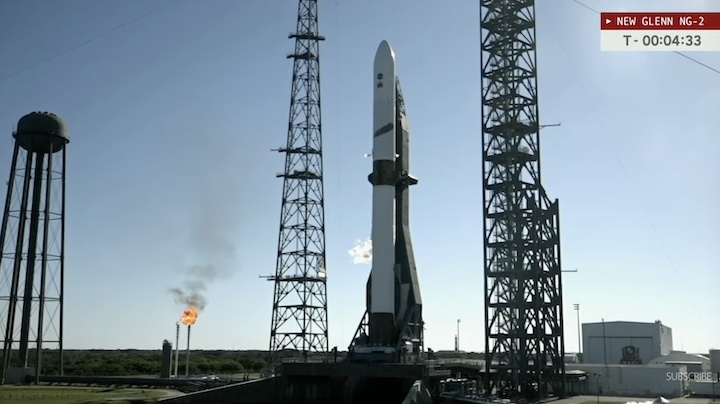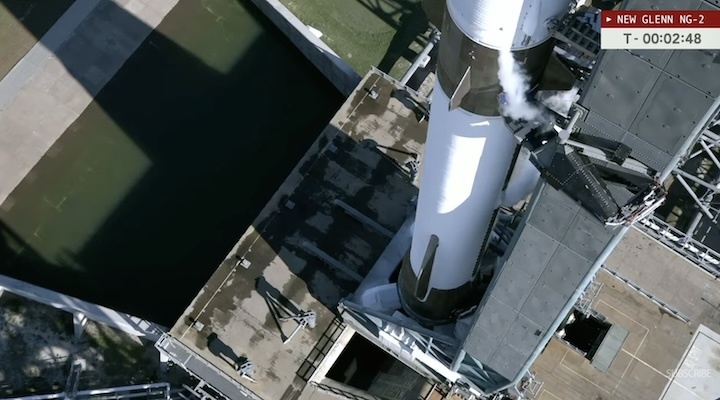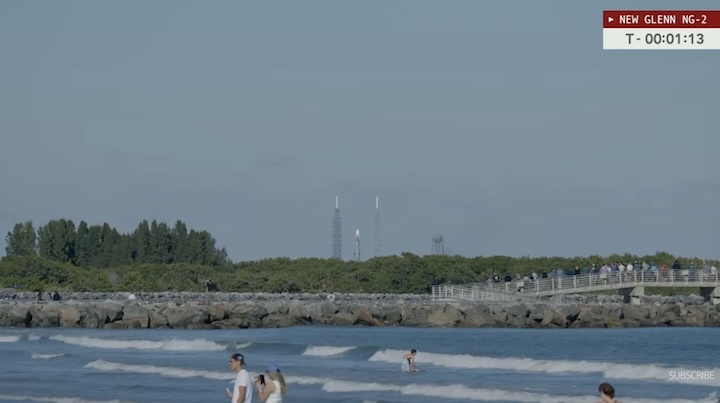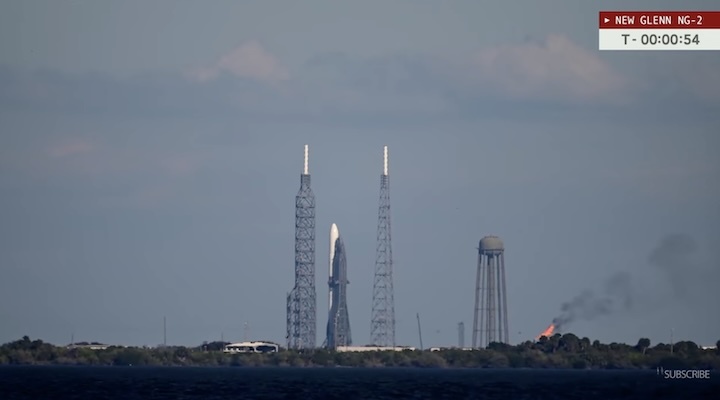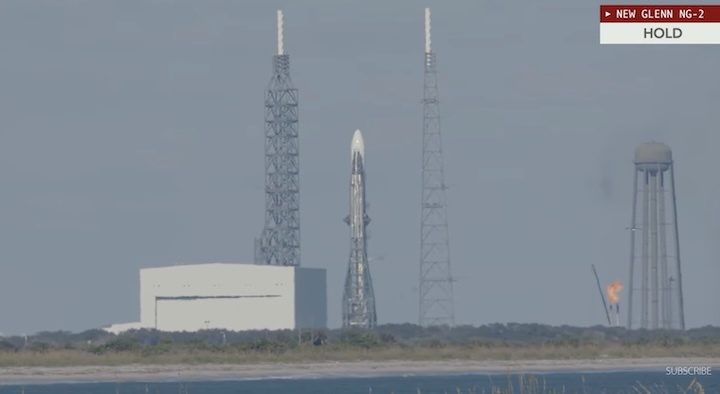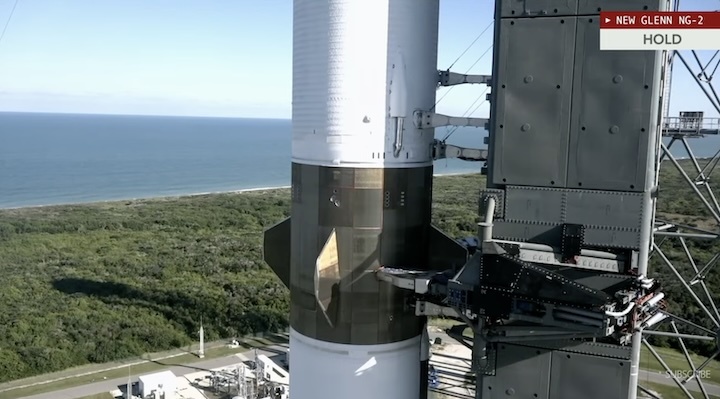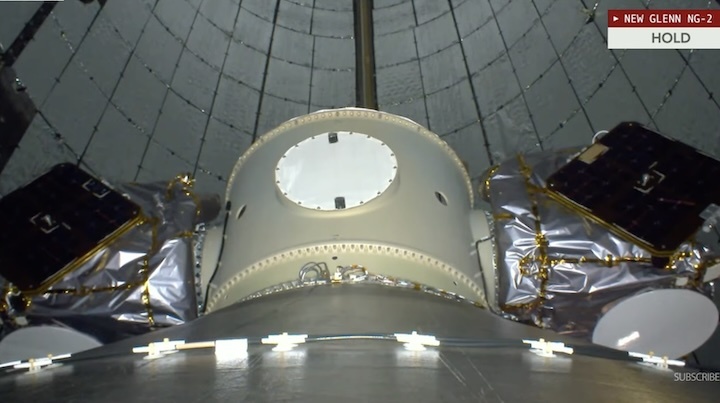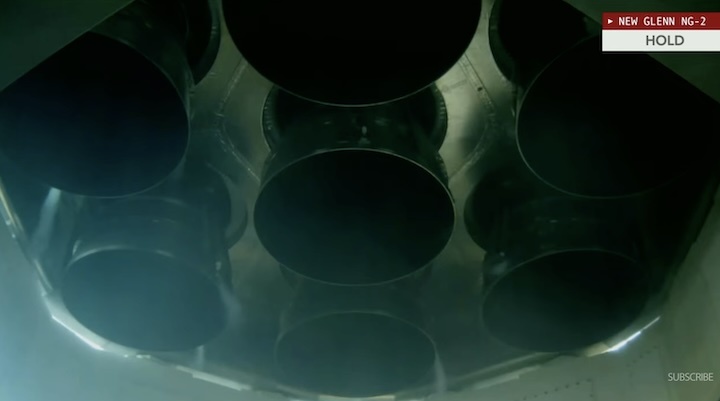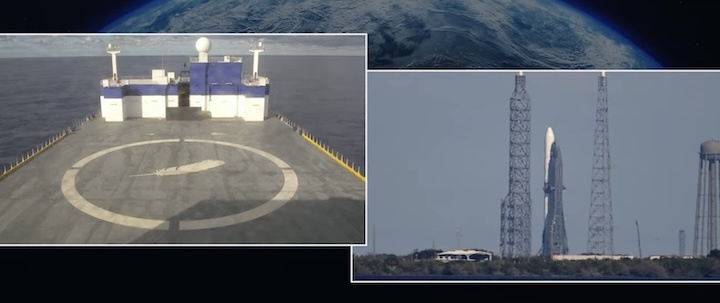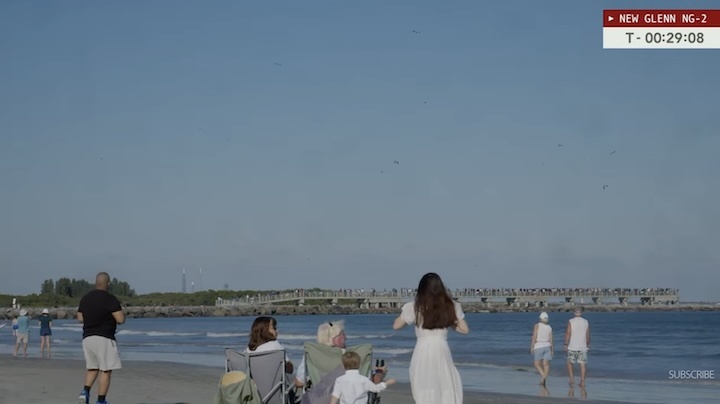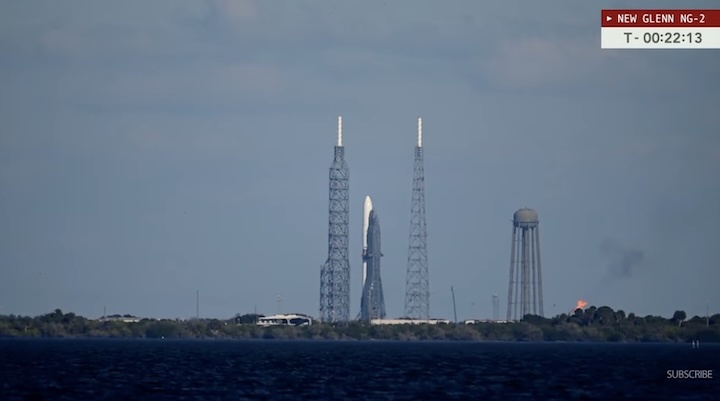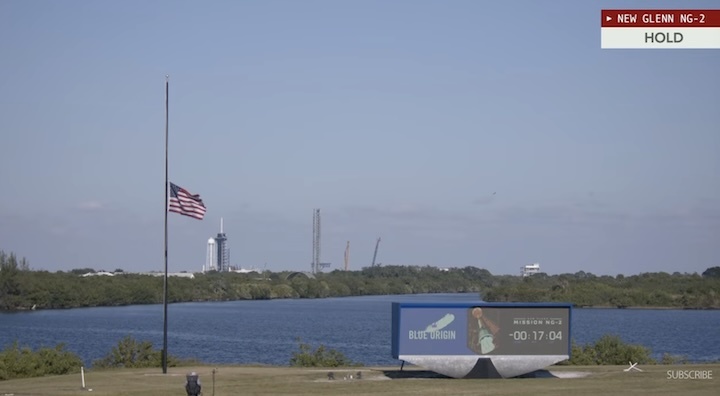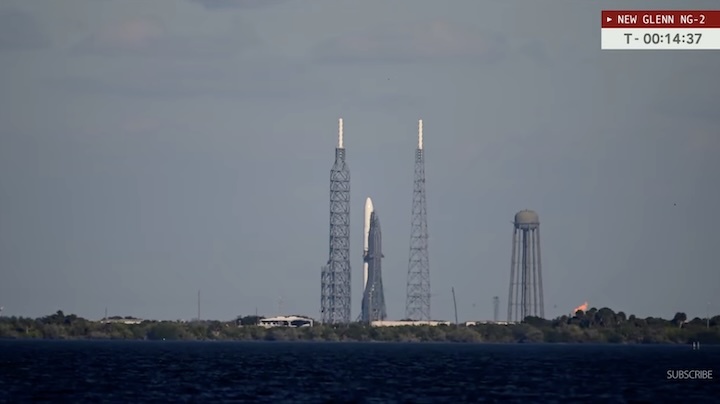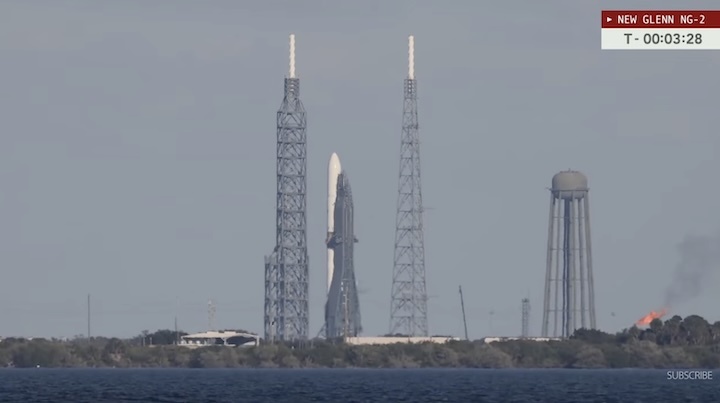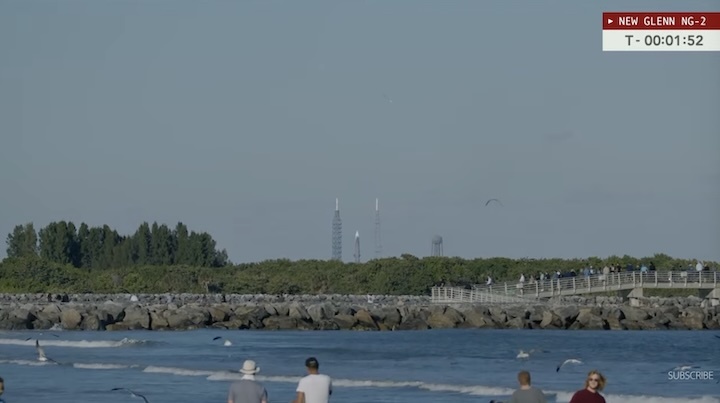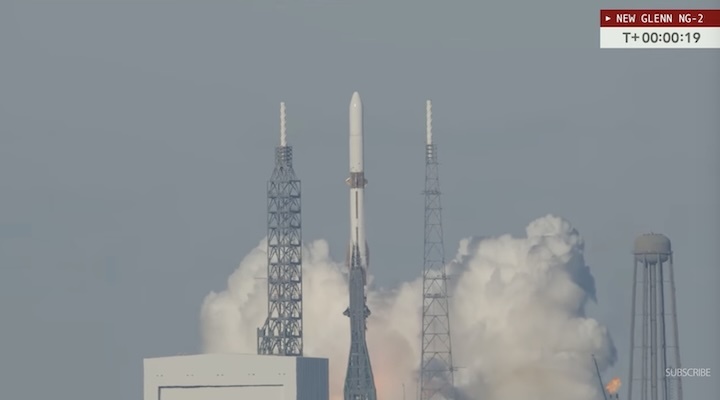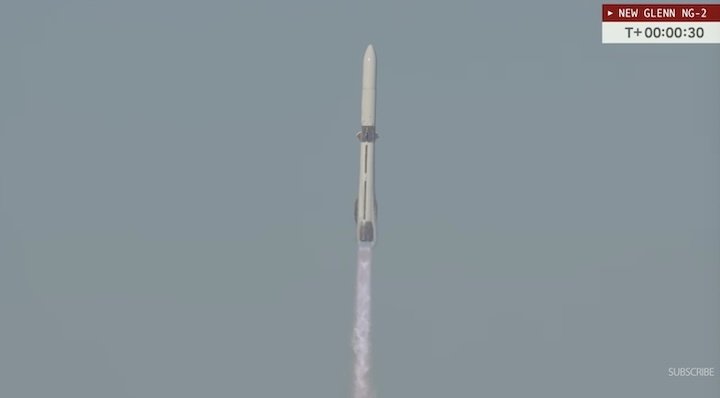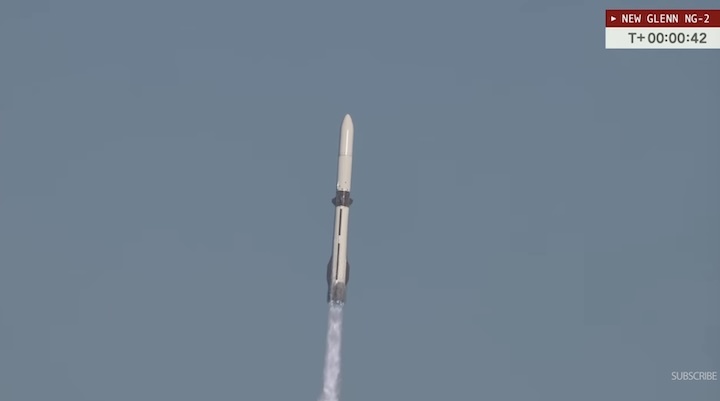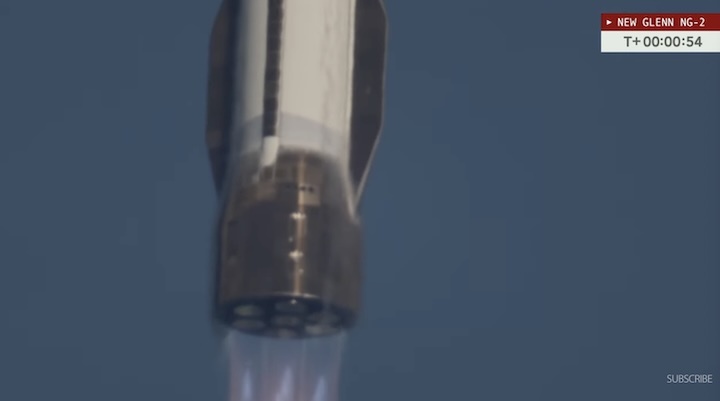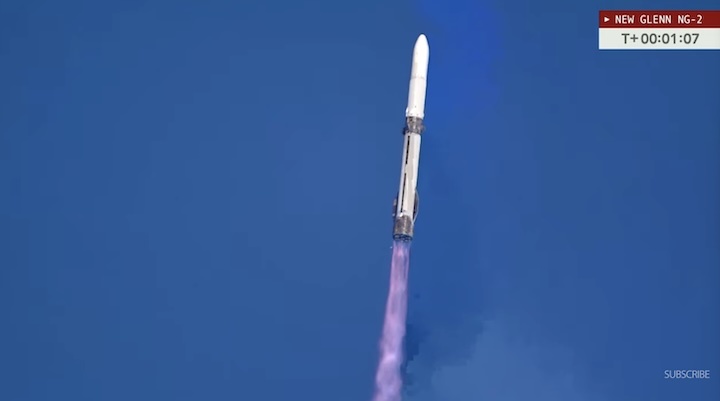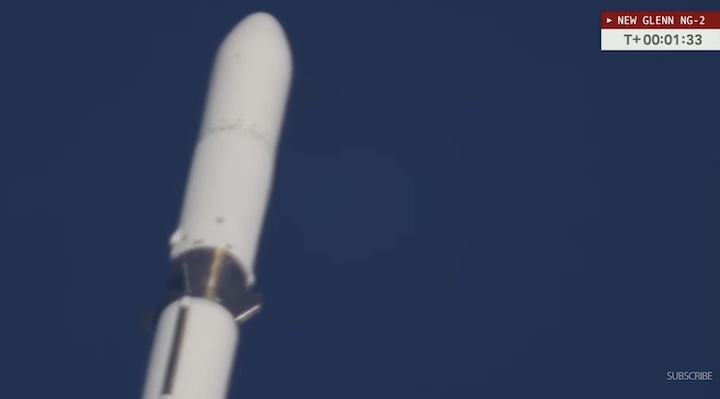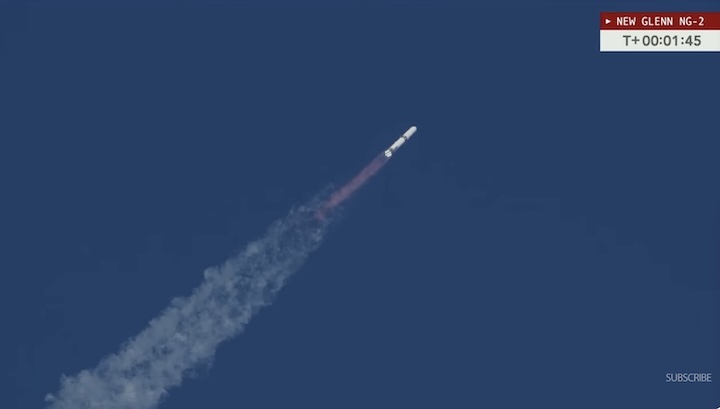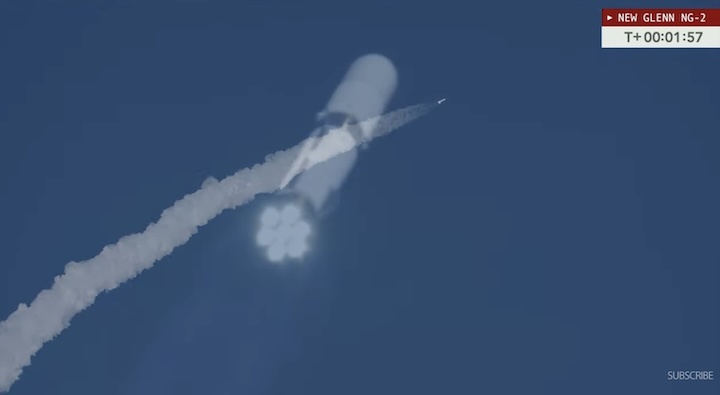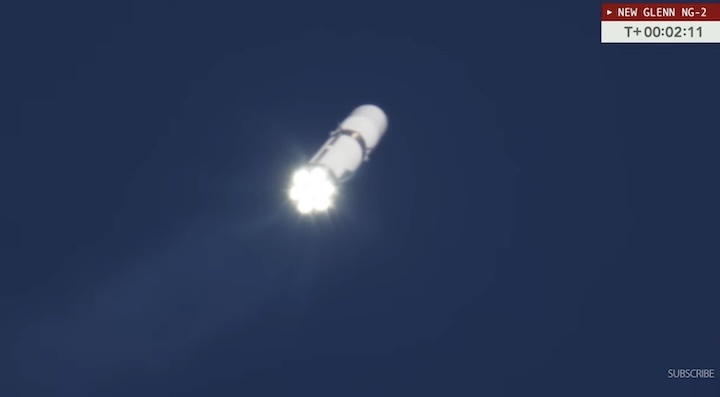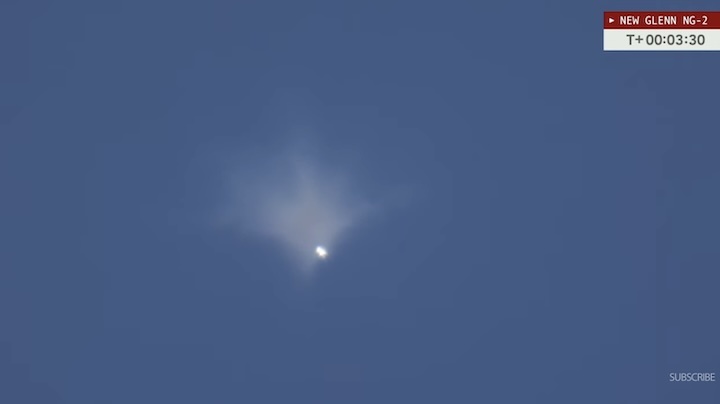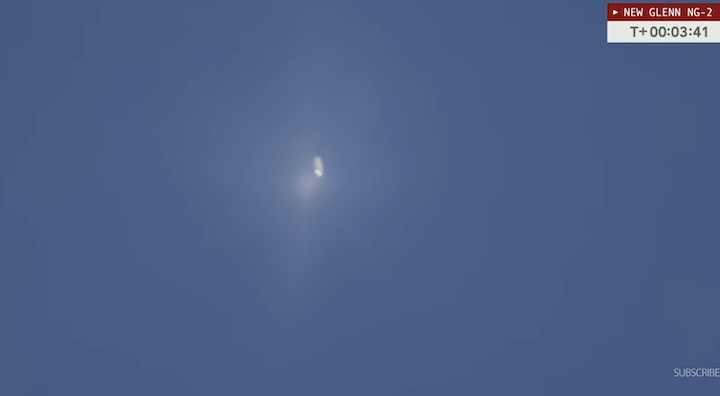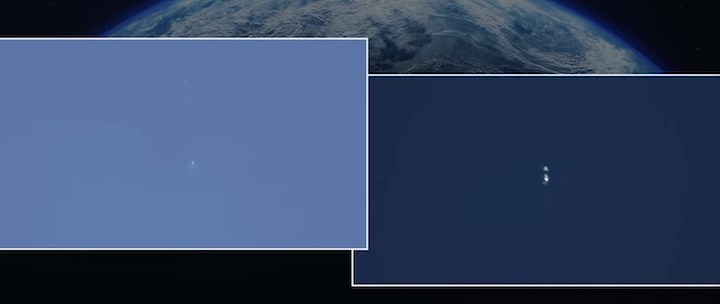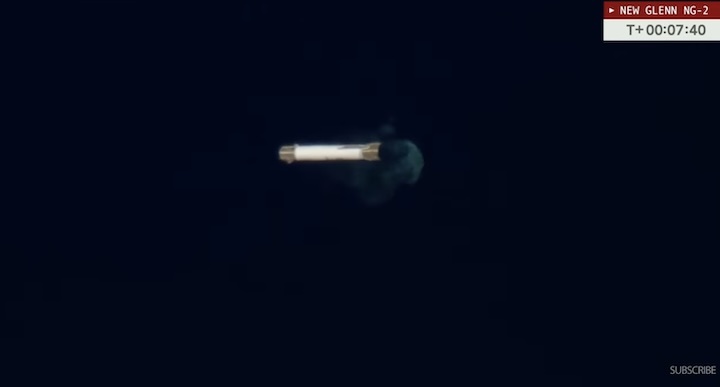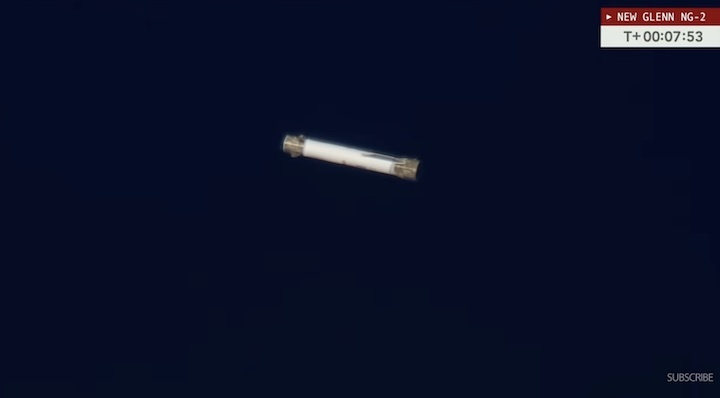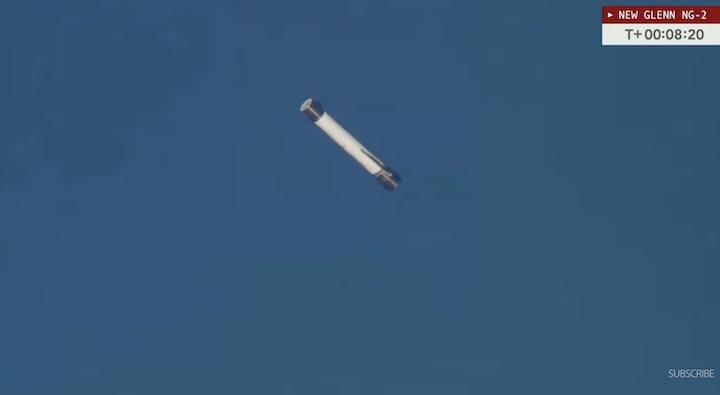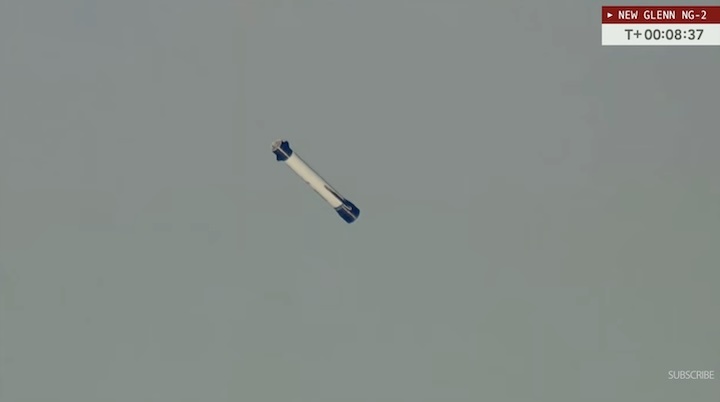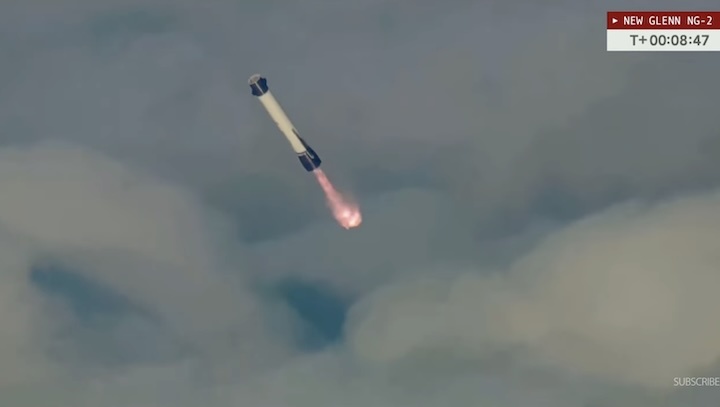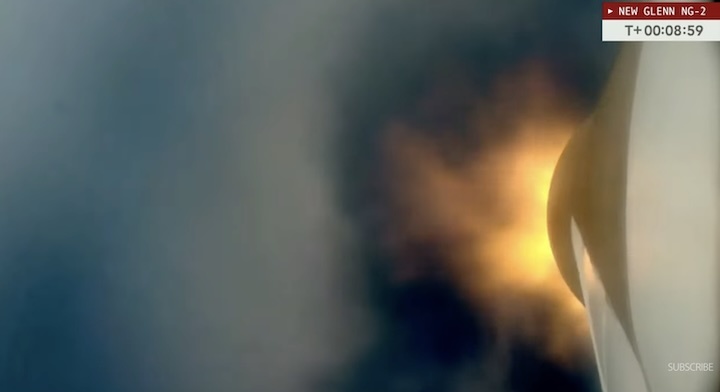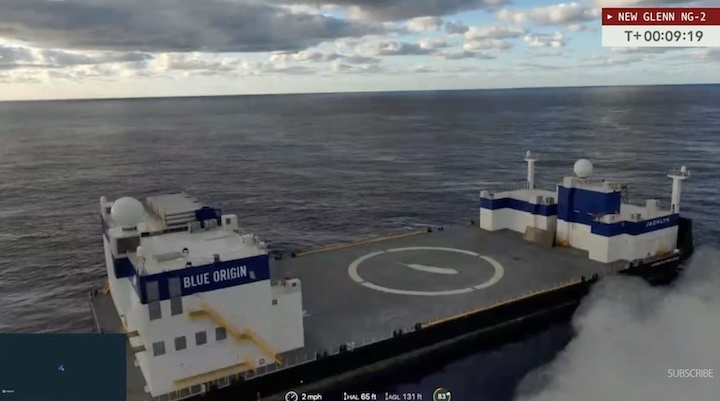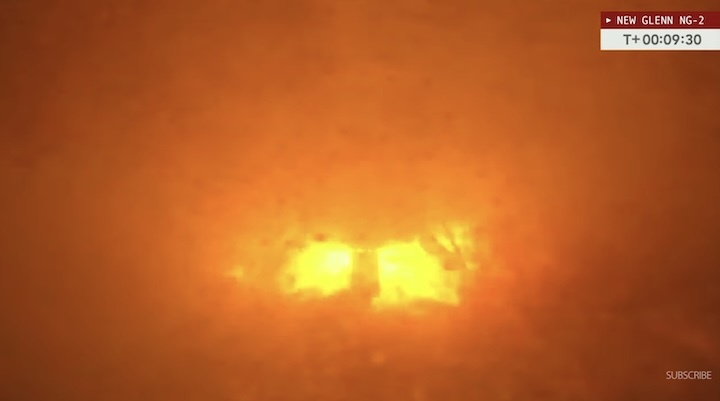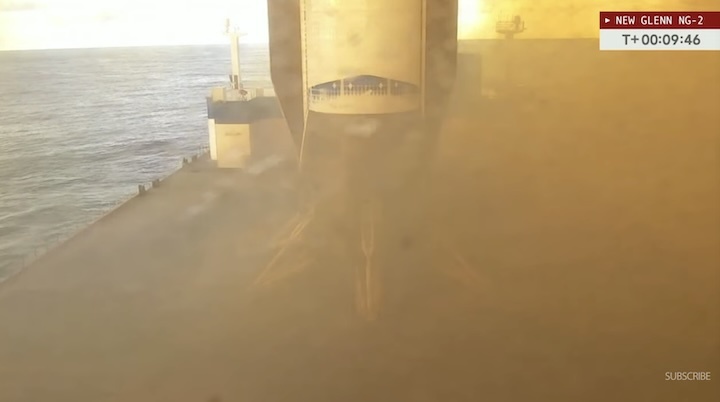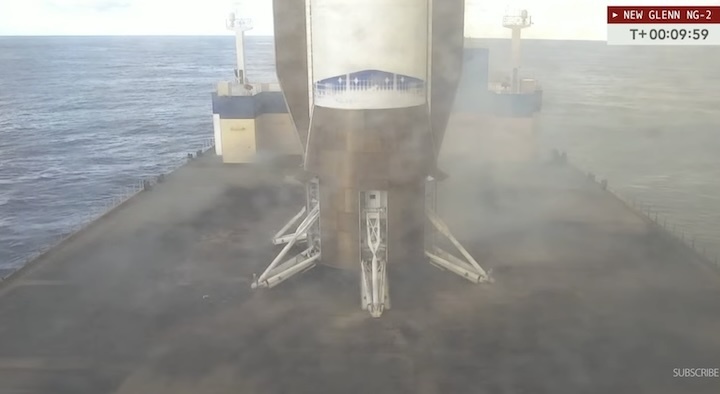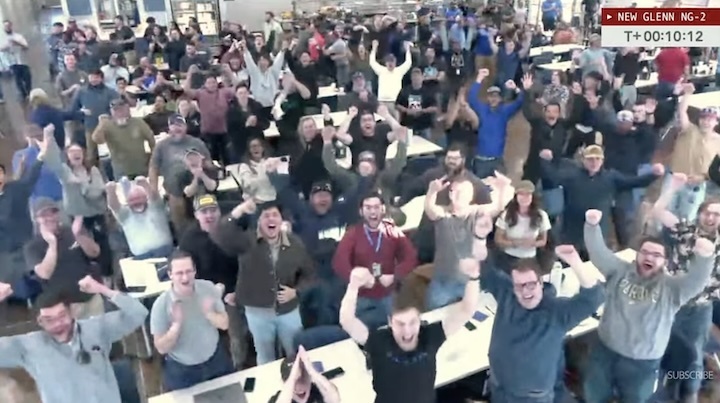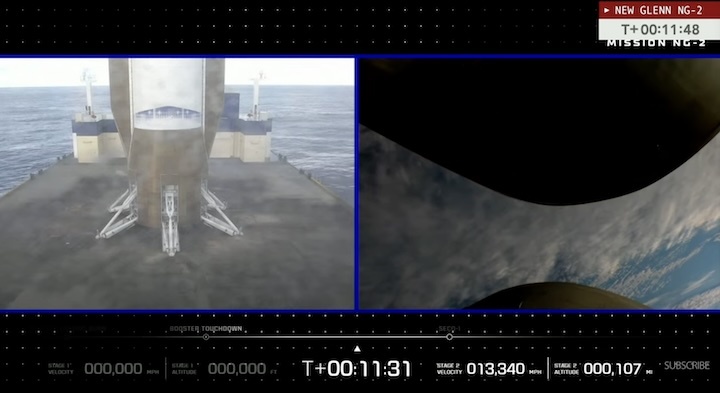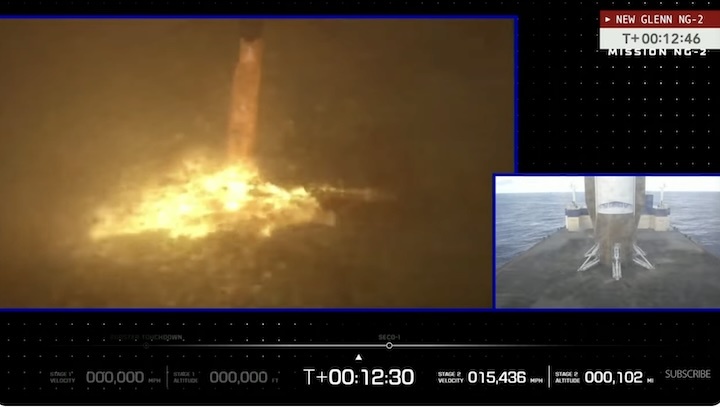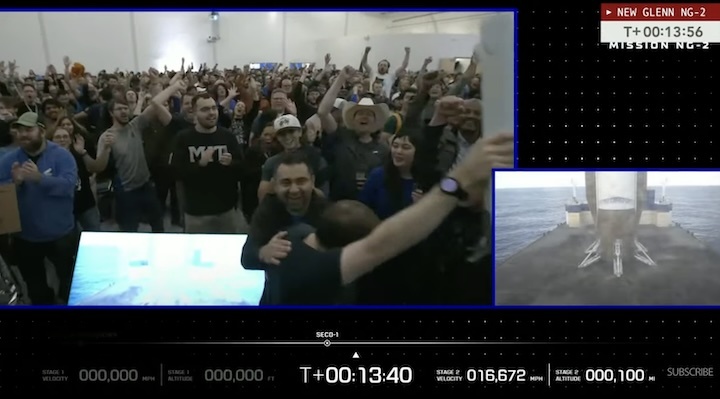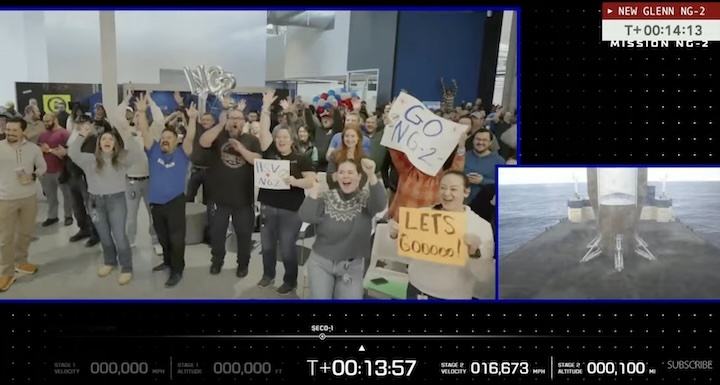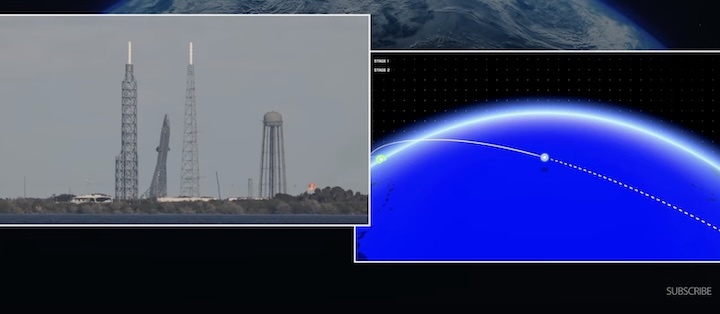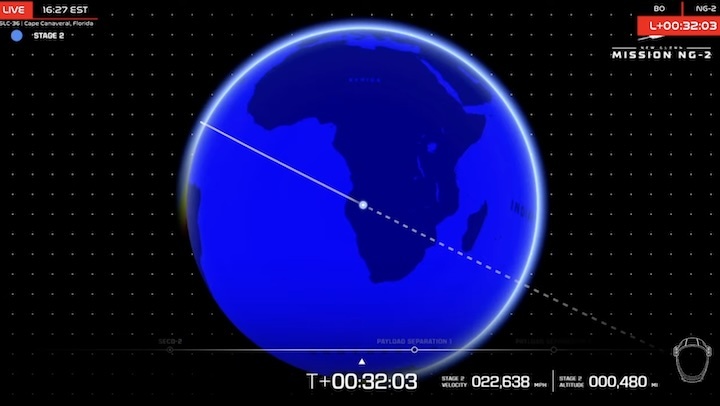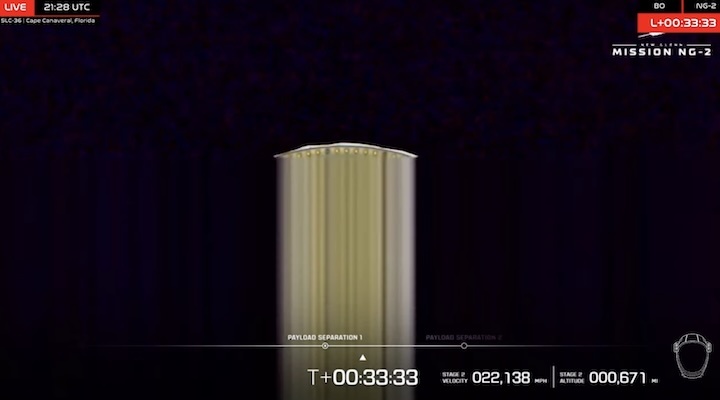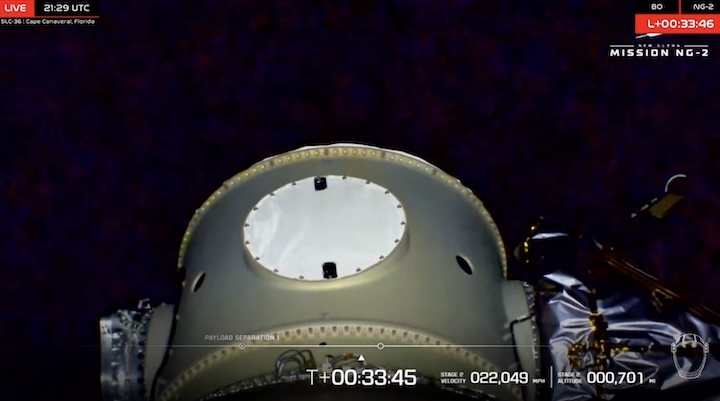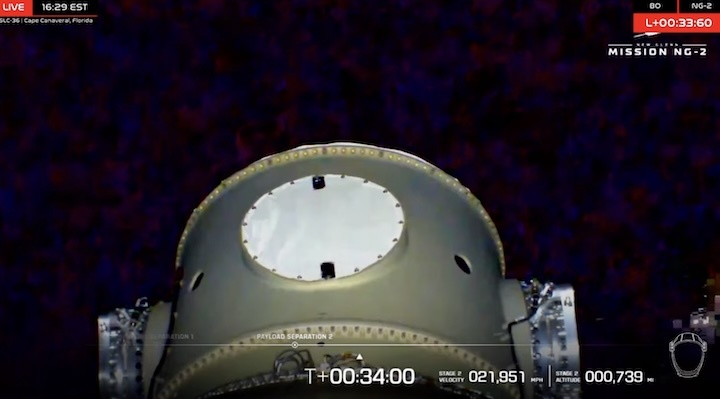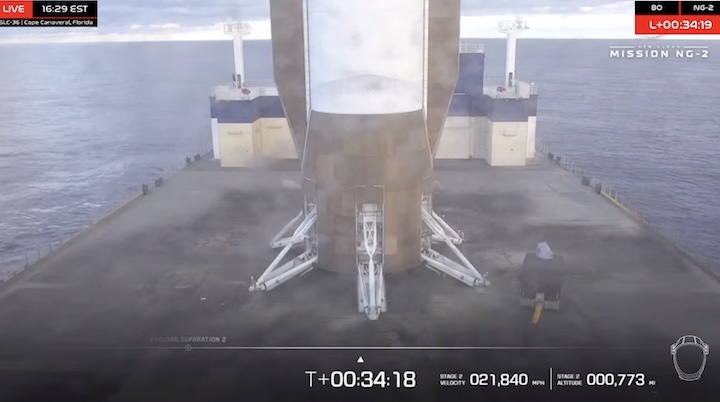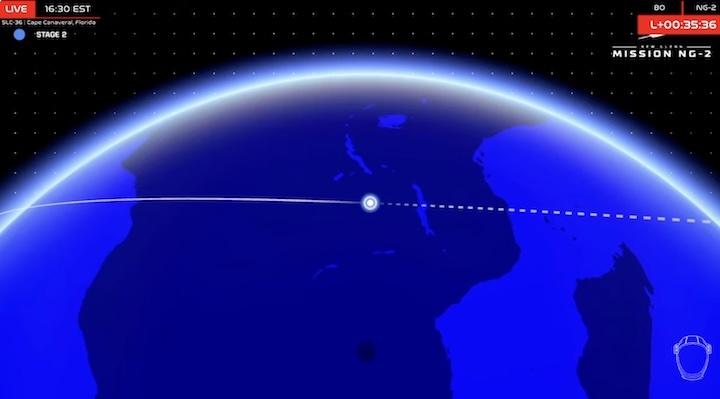5.11.2025
NASA’s next Mars mission will help future astronauts on the Red Planet
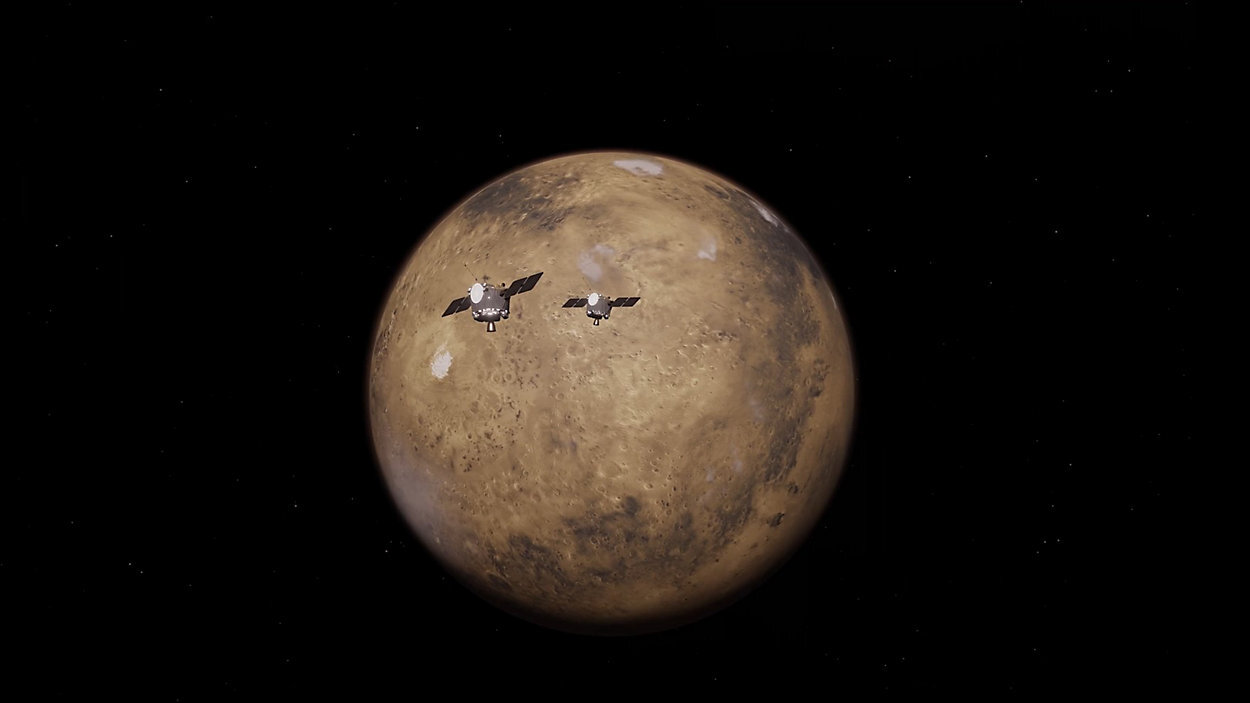
This artist rendition shows NASA's two satellites from the ESCAPADE mission, heading to Mars. Once they do arrive at Mars, they will orbit the red planet to study its magnetosphere. (NASA)
CAPE CANAVERAL SPACE FORCE STATION — NASA and Blue Origin are planning to launch the ESCAPADE mission, where a pair of satellites will study Mars' magnetosphere. ESCAPADE will eventually help future astronauts, the mission’s lead scientist shared.
Blue Origin’s New Glenn rocket will launch the Escape and Plasma Acceleration and Dynamics Explorers (ESCAPADE) mission on Friday afternoon, according to the FAA.
Before that happens, the mission’s principal investigator Dr. Rob Lillis shared a bit more about ESCAPADE and how it will help humans once they get to Mars.
Taking us on an ESCAPADE
This NASA mission is managed by the Space Sciences Laboratory at the University of California, Berkeley, along with Rocket Lab, NASA’s Goddard Space Flight Center, Florida’s Embry-Riddle Aeronautical University, Advanced Space LLC, and Blue Origin, explained Lillis.
The two satellites — called Blue and Gold in honor of the University of California, Berkeley’s colors, said Lillis — will be used to study Mars’ magnetic and space weather.
“The two spacecraft … will be characterizing the magnetic and space weather (i.e. plasma, radiation) environment on their way to Mars, then after they achieve Mars orbit, they'll be measuring this environment in the solar wind and within Mars' upper atmosphere, including rates of atmospheric escape,” Lillis explained to Spectrum News in an email interview.
There are many benefits to having two satellites for a mission like this, as it will be easier to measure solar winds and other conditions, he stated.
“With a single orbiter (satellite), we could measure conditions in the upstream solar wind, but then have to wait a couple of hours before the spacecraft orbit brought us into the upper atmosphere to measure the rates of atmospheric escape. That’s too long: we know the space weather propagates through the system in only one or two minutes. With ESCAPADE, we can measure cause and effect at the same time, i.e. the solar wind and upper atmosphere simultaneously. To start to understand this highly dynamic system, we need that cause-and-effect perspective,” according to Lillis.
How the Martian magnetosphere can tell a story
Mars’ magnetosphere is distinct and complex due to the magnetic and plasma environment that surrounds the planet, which is caused by the strong magnetized rocks in the planet’s crust and the electric currents in the upper atmosphere created by solar and atmospheric winds, Lillis commented.
And it is why the magnetosphere is so different from other planets in our little solar system.
“Unlike Earth, Mars’ relatively weak and patchy magnetosphere means it provides less of a protective barrier from the solar wind, which continuously eats away at Mars’ atmosphere. Studying this process helps scientists understand how Mars’ atmosphere has changed over time and what conditions might have been like in the past. For instance, a stronger ancient magnetosphere probably protected Mars’ atmosphere and surface from harsh solar radiation, possibly creating conditions more favorable for life,” Lillis shared.
But also understanding Mars’ magnetosphere can help with future human missions to the Red Planet, noted Lillis.
“Knowing how Mars’ hybrid magnetosphere interacts with potentially dangerous space weather helps us better forecast its effects and design better protection for both spacecraft and astronauts, both on the surface and in orbit. In addition, variability in Mars’ ionosphere can distort radio signals, causing difficulties for human communication and navigation on the surface,” he wrote.
Lillis added that when humans travel to Mars, they will need to rely on accurate space weather to stay safe from solar radiation storms, and understanding the magnetosphere and upper atmosphere will help with that.
If the long commute goes well, it will still be a nail-biting experience, Lillis shared.
“We will be biting our nails on September 1, 2027, as we await confirmation that Mars Orbit Insertion (MOI) has gone smoothly. This is what we call a ‘do or die’ maneuver: if the engines fail to fire at just the right time and for just the right duration, the spacecraft could be stranded in their own orbits around the sun, never to come back to Mars. If we are successful, we'll be celebrating at our Mission Ops Center in the hills above the UC Berkeley campus, with a couple of cheeky beverages I'm sure,” he stated.
Quelle: SPECTRUMNEWS
----
Update: 8.11.2025
.
Florida rocket launch record set to fall this weekend with SpaceX, Blue Origin liftoffs
That's when Blue Origin hopes to launch its second New Glenn rocket, sending NASA's twin ESCAPADE spacecraft up to study the Martian magnetosphere. The enormous rocket should rumble into flight during a window extending from 2:45 p.m. to 5:11 p.m. from Launch Complex 36 at the Space Force installation.Quelle: Florida Today
----
Update: 9.11.2025
.
NASA is sending probes to Mars to find out why it lost its atmosphere – and what that could mean for Earth
The mission will be the second launch of Blue Origin's New Glenn rocket.

Mars is a cold, dry, desert-like planet. But billions of years ago, scientific evidence suggests that it had a thick atmosphere, which kept it warm enough to support flowing water on its surface. So, what happened to the Red Planet, and could it happen to Earth?
"From everything we know about the history of Mars through robotic exploration, it had very similar chemistry [to Earth]. It had very similar periods of time and development. It had that thicker atmosphere, had standing water, fresh water. All the things that Earth had," said Casey Dreier, chief of space policy at the Planetary Society.
"So, what went wrong? Why don't we see Mars as a rich planet now? That's exactly the kind of thing that helps us put Earth in context and hopefully makes us appreciate Earth a little bit better as an outcome of that," he added.
Dreier says one of the reasons Mars no longer has a dense and protective atmosphere is that the planet lacks the same kind of magnetic field that keeps Earth safe from the sun's highly charged particles.
To better understand how solar wind energy interacts with Mars’ atmosphere and magnetic environment, and how that might have altered the planet's surface, NASA and the University of California, Berkeley's Space Sciences Laboratory are sending twin orbiters to the Red Planet.
The ESCAPADE mission, short for Escape and Plasma Acceleration and Dynamics Explorers, is the first dual-satellite mission to another planet. Two identical spacecraft will orbit in formation to provide a first-of-its-kind 3D view of Mars' magnetosphere and upper atmosphere.
A unique route to the Red Planet
Scheduled to lift off on Sunday at 2:45 p.m. ET from Kennedy Space Center in Florida aboard a Blue Origin New Glenn rocket, the two probes will take a unique path to Mars. Instead of the traditional route used by previous Mars missions, UC Berkley says the ESCAPADE will first travel to a Lagrange point, an area in space where the pull of Earth's and the sun's gravity is balanced. The two craft will loop around it for about a year and then slingshot back toward Earth on their way to Mars.
This flexible route could pave the way for future Mars missions by allowing for launch schedules spread over many months, which is essential if humans are to send fleets of spacecraft to Mars.
Sunday's launch is only the second flight of the New Glenn rocket, a much more powerful rocket than the company's New Shepard, which it uses for its regular space tourist missions to the edge of space. New Glenn is more than 320 feet tall, partially reusable and capable of delivering payloads to low, medium and geosynchronous orbits.
Unlocking the magnetic mysteries of Mars
NASA says the two identical Mars probes, which are nicknamed Gold and Blue after UC Berkeley's school colors, "will reveal the planet’s real-time response to space weather and how the Martian magnetosphere changes over time."
The two probes are about the size of a mini-fridge and weigh nearly 250 pounds.
Once they arrive at Mars in 2027, "The twin probes are designed to complement each other and unlock a more complete, real-time picture of how the Martian atmosphere blows off into space," according to an analysis of the mission by the Planetary Society.
Dreier says that understanding what happened and is happening to Mars could help scientists better protect our own climate and atmosphere from current and future solar threats.
"The interaction between the sun's particles and the atmosphere of Mars is thought to be one of the driving reasons that Mars no longer has a dense and protective atmosphere itself on the planet. So, understanding that relationship helps us understand the history and processes that have stripped away Mars's atmosphere over time," Dreier explained.
Safeguarding future astronauts from solar threats
The mission's principal investigator, Robert Lillis of the Space Sciences Laboratory, emphasized that mapping Mars' magnetic fields and how they respond to space weather is also critical for safeguarding future astronauts who may visit the planet. Solar storms and background cosmic radiation could pose significant risks to settlers, and lessons from this mission could help NASA protect human crews who may eventually spend time there.
"We will be making the space weather measurements we need to understand the system well enough to forecast solar storms whose radiation could harm astronauts on the surface of Mars or in orbit," Lillis said in a press statement.
Dreier says the ESCAPADE mission is building on the science collected by MAVEN, another probe that has been studying the planet's atmosphere since 2014. He notes that the mission is costing significantly less than previous scientific missions to space.
A mission on a budget
"This is a very, very, very low-cost mission for these types of science missions. This is roughly $70 to $80 million," said Dreier. "It's one of these smallest mission classes that NASA has, and as a consequence of that, it's a very limited and focused set of scientific priorities, and it's almost itself demonstrating the feasibility of doing missions like this.”
Dreier points out that NASA is facing the prospect of significant budget cuts and the decommissioning of a number of spacecraft, including MAVEN. He says wiping out the space agency's science missions could have detrimental long-term consequences.
"It was actually looking at planets like Mars and also looking at planets like Venus that made scientists on Earth realize our climate and our planet is not this fixed, unchanging sphere. Things can go really, really, really wrong over the course of long periods of time," said Dreier.
"Understanding that we weren't owed an atmosphere, that we aren't owed this protection from our magnetic field, puts this into context that the life and the habitat that we have here on Earth is actually very rare, but it's also relies on and is protected by a number of these external factors that we are really just beginning to understand over the last generation or two," he added.
Quelle: abcNews
----
Update: 11.11.2025
.
Blue Origin Resets New Glenn Launch For Nov. 12

Solar storms delay launch of Blue Origin's big new rocket with Mars orbiters for NASA
Strong solar storms responsible for breathtaking auroras across the U.S. have delayed the launch of Blue Origin's big new rocket
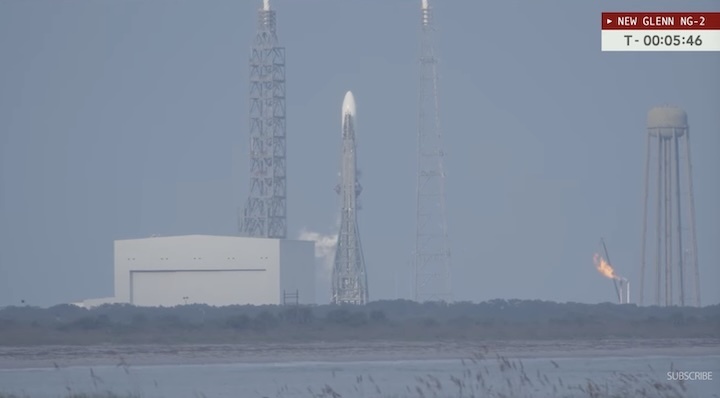
Intense solar storms responsible for breathtaking auroras across the U.S. delayed the launch of Blue Origin’s big new rocket Wednesday.
Already grounded by poor weather, the New Glenn rocket was poised to blast off Wednesday afternoon with two Mars orbiters for NASA from Florida. But five hours before the targeted liftoff, it was called off because of the heightened solar activity.
Worried about the possible impact of increased radiation on its Mars-bound spacecraft, NASA decided to postpone the launch until conditions improve. No new launch date was set.
This will be only the second flight of a New Glenn rocket, which made its debut in January. At 321 feet (98 meters), it is considerably larger and more powerful than the New Shepard rockets Jeff Bezos' Blue Origin is launching from Texas with passengers.
